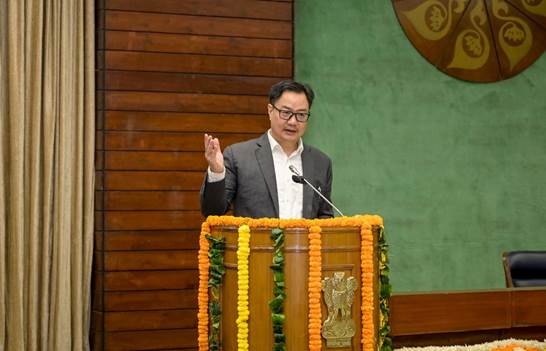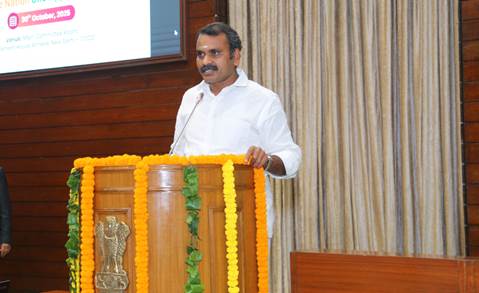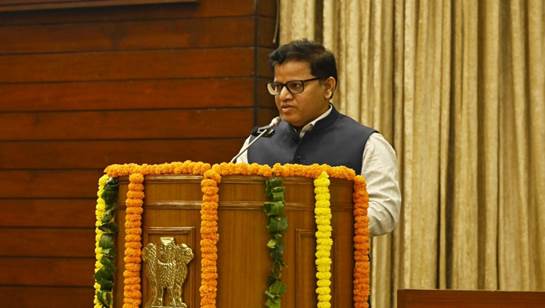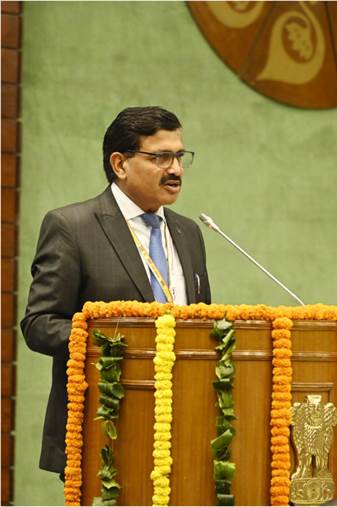The recent national gathering focused on advancing the National e-Vidhan Application came to a successful end in the capital city. This event brought together officials from various states to discuss and plan the move towards fully digital legislative processes across India. Under the guiding principle of a single platform for the entire nation, the conference highlighted the central government’s dedication to making law-making more efficient and eco-friendly by reducing paper usage.

Key Leaders Highlight Progress and Vision
The conference kicked off with an inspiring speech from the Union Minister responsible for Parliamentary Affairs and Minority Affairs. He praised the teamwork between the center and states, describing the application as a vital part of democratic strength. His words underscored how this tool is enhancing the overall framework of governance in parliamentary setups.
In the closing session, the Minister of State for Parliamentary Affairs and Information and Broadcasting spoke about the growth of this platform. He pointed out that it now serves as a shared space for legislative activities in multiple state assemblies, fostering uniformity and ease of operations.
Adding to the discussions, the Secretary of the Ministry of Parliamentary Affairs shared impressive statistics on achievements. He mentioned that the system has handled over ninety thousand queries from legislators and more than six hundred legislative proposals digitally. This data shows the real impact on daily legislative work.
The mission leader for the project, an Additional Secretary in the ministry, greeted all attendees and stressed the role of legislative bodies in building a developed India. He positioned the digital tool as the key driver for this transformation and urged states to keep up the pace through training programs, streamlined online processes, and strong internal support structures.

State Representatives Share Experiences and Ideas
Throughout the day, representatives from different states took the stage to present their journeys. They talked about successful strategies they implemented to go digital, the hurdles they encountered along the way, and practical recommendations to improve the overall system. These sessions allowed for open exchange of knowledge, helping everyone learn from real-world examples.
Such interactions are crucial because each state has unique challenges, from infrastructure limitations to staff training needs. By sharing these stories, participants could identify common solutions and avoid repeating mistakes. This collaborative approach is what makes national initiatives like this one truly effective in a diverse country like India.
Major Milestone: Adopting the New Delhi Resolution
One of the highlights was the unanimous agreement on a forward-looking document called the New Delhi Resolution on NeVA 2025. This resolution reflects a joint promise to speed up the use of the application and promote teamwork between the center and states in digital matters.
The resolution outlines several important pledges that states and the central ministry will work on together. First, there will be a dedicated group of senior officials to oversee progress. Second, efforts will focus on completing the full rollout of the system without delays. Third, training initiatives will be ramped up to ensure everyone is comfortable using the technology.
Additionally, old records will be scanned and made available online to preserve history and improve access. The plan also includes incorporating artificial intelligence and new tech innovations to make processes smarter. Finally, there is a proposal to create a country-wide index for legislative documents, which could revolutionize research and reference work.

Current Status and Recognition of Efforts
As things stand, twenty-eight legislative bodies have formally agreed to partner with the central ministry for this project. Out of these, twenty are already operating fully on the platform. This steady advancement indicates that the goal of digital legislatures is within reach, with more states joining regularly.
To mark the occasion, the Minister of State handed out special honors to the states that have gone live with the system. All attendees also received acknowledgments for their involvement and contributions during the conference. These gestures not only celebrate achievements but also motivate others to follow suit.
The ministry has promised ongoing assistance to help remaining states get onboard quickly. This includes support for skill development, technical upgrades, and ensuring the platform remains safe, clear, and user-friendly for both lawmakers and the public.
Why This Matters for India’s Future
Moving to a digital legislative environment is more than just adopting new software. It is about making governance faster, more transparent, and accessible to citizens. With everything online, people can track bills, questions, and debates in real time, building greater trust in the system.
For legislators, it means less time on paperwork and more on discussions that matter. Environmentally, it reduces the massive paper consumption traditionally associated with assemblies. In the long run, integrating advanced technologies like AI could predict trends, automate routine tasks, and provide data-driven insights for better policy-making.
Events like this conference play a pivotal role in aligning everyone towards these goals. By bringing stakeholders together, sharing successes, and addressing gaps, India is paving the way for a modern legislative framework that supports national development ambitions.

The push for digital transformation in legislatures aligns perfectly with broader initiatives for a tech-enabled India. As more states embrace this change, the benefits will cascade down to improved public services and stronger democratic participation. Keeping the momentum going will be key, and with committed leadership at both central and state levels, the vision of paperless assemblies seems achievable soon.
This conference has set a positive tone for the coming year, with clear action points and renewed enthusiasm. It serves as a reminder that collaborative federalism can drive meaningful progress in governance technology.
